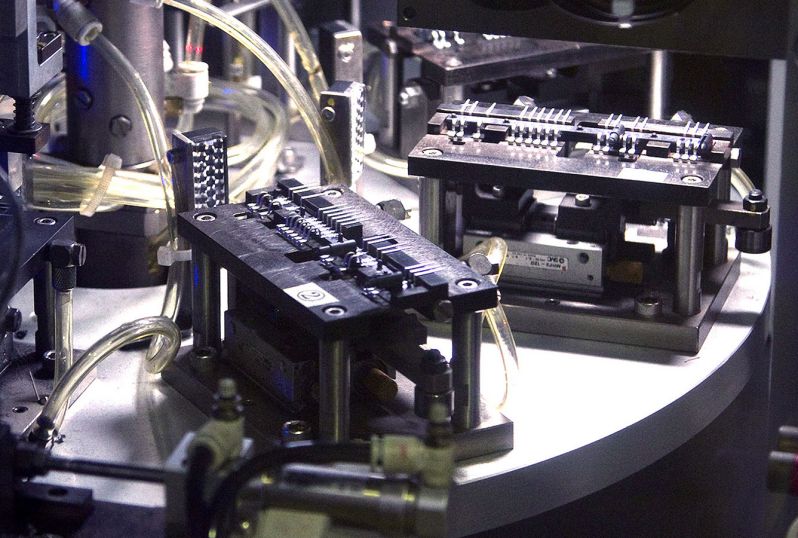Insert Molding Solutions
Insert molding is an process which encapsulate a insert in a plastic part during injection. It requires an insert (typically is metal) to be pre-placed in the mold cavity for injected molten plastic to flow around. Encapsulating the insert with plastic creates a single plastic component that’s generally more reliable and stronger than one created using secondary assembly.
We offer full-service custom insert injection molding at any stage of product development or production.
We offer full-service custom insert injection molding at any stage of product development or production.
- Design for manufacturability (DFM) analysis, with a lead engineer assigned to each project
- Engineering services, including mold flow and warp analysis for difficult parts or critical-to-function parts
- Application assistance and selection of the optimum performing engineered resins
- Combining services to achieve the high functionality of finished plastic parts and products
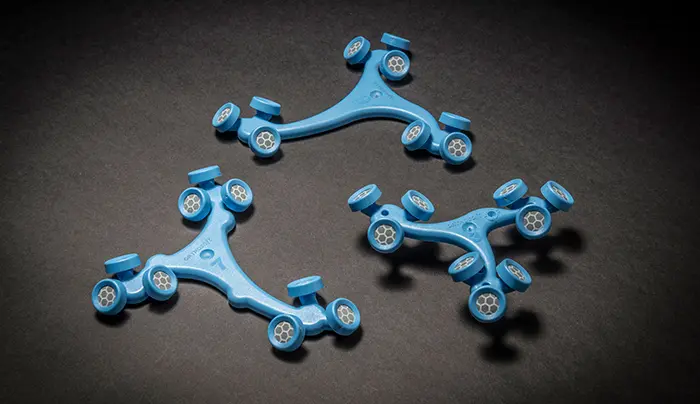
How Does Insert Molding Work?
Insert Injection molding is ideal for improving the strength and reliability of a component by eliminating the need for secondary operations such as soldering, connectors, and adhesives. Insert molding can be accomplished through manual insert loading, the general cost-effective way to approach low volume applications or extremely complex part geometries, but automatic insert molding is a better choice for part consistency. It reduces human error, improves efficiencies, and ensures optimal cycle times. Following is insert molding process step:
- 1. Plastic resin is added to a hopper, heat to melt, wait for start to inject.
- 2. Manual loading or servo robot loading the insert fit into cavity, close mold, begin to inject, molten plastic is fed into mold. the pellets are heated into a liquid in the cylinder, completing the preparation process for ejection during the insert injection moulding process.
- 3. Once the part is cooled and solidified, open the mold, ejector system discharge the parts to the outside.
- 4. In the final process, the injection gate and runner system will be trimmed and with insert plastic injection molding part is finished.

Types of Inserts
Inserts can be just about anything, from brass to electrical contacts. Common metals used for inserts include brass, steel, aluminum, strainless steel, magnet, etc.
In order to maintain the quality of insert molding products, the precision of the insert is very important. must be keep the insert tight tolerance.
Because of the wide array of potential applications, it’s important to understand the insert molding process, design the part correctly, and consider how the production process works.
In order to maintain the quality of insert molding products, the precision of the insert is very important. must be keep the insert tight tolerance.
Because of the wide array of potential applications, it’s important to understand the insert molding process, design the part correctly, and consider how the production process works.
Magnet
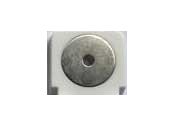

Alloy Threads
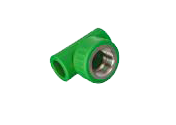

Pins
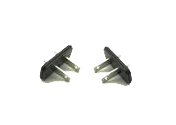

Screw
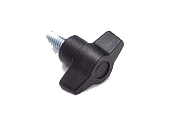

Bushings
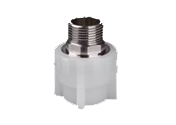

Threaded Fasteners
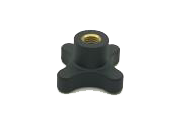

Electrical Contacts
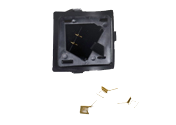

Filter
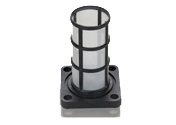

Metal
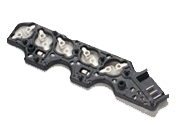

Engineering Drives Innovation
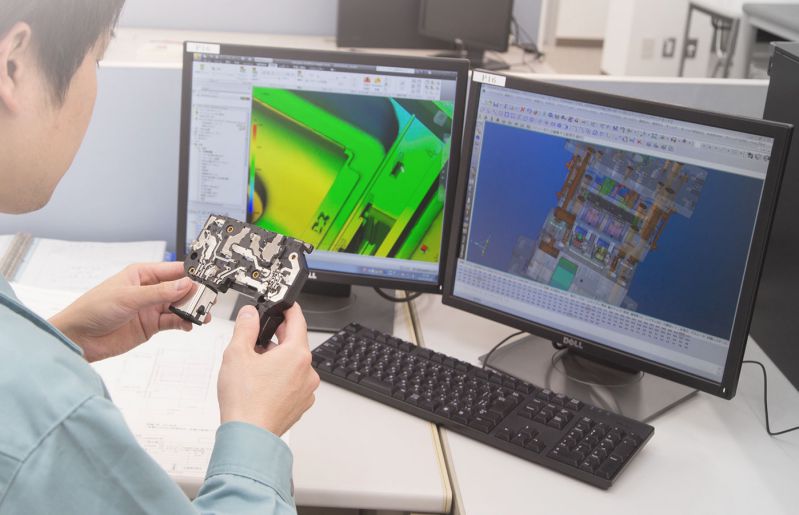
Our engineering team specializes in design for manufacturability, Mold design, mold flow analysis, in-house automation and fixturing, CNC machining and process improvement. With a staff of mold engineers, process engineers, and manufacturing engineers, we can begin by evaluating all aspects of your product. We even offer assembly and packaging solutions. Custom materials for strict applications are also available from our supply partners.
Aside from having deep plastics engineering talent on staff, our mold designers are also journeymen moldmakers by trade. Our mold designers look at mold designs from a machinability standpoint because they're genuine moldmakers. They work in tandem with our plastics engineers to not only design molds as originally planned, but many times come up with novel design solutions to optimize the mold in a production environment. The mold designs are then handed off to our in-house, fully equipped moldroom staffed by experienced, journeyman moldmakers.
Aside from having deep plastics engineering talent on staff, our mold designers are also journeymen moldmakers by trade. Our mold designers look at mold designs from a machinability standpoint because they're genuine moldmakers. They work in tandem with our plastics engineers to not only design molds as originally planned, but many times come up with novel design solutions to optimize the mold in a production environment. The mold designs are then handed off to our in-house, fully equipped moldroom staffed by experienced, journeyman moldmakers.
Insert Molding Manufacturing Considerations
High quality, cost-effectiveness plastic parts relies heavily on good part design as well as advanced skills in mold design and manufacturing. If you considering using the insert molding process for your parts, it is necessary to make your preparations and plan before you start. Below are the major considerations from a design and making perspective:
- The Product Design
The primary challenges in developing insert plastic components are part geometry and tooling design - The Insert
The insert tight tolerance is the prime necessity in any insert molding process. A small misalignment can cause failure. - Insert Location
Since inserts still rely on plastic to hold them in place, you will need to think about the function of the insert and how forces will be applied. - The Cost
If your part is cost sensitive, you’ll want to consider the cost of the inserts and work with an injection molder to understand the increase in the piece price that insert molding will add. - The Mold
Inserts need to be held in place during the molding process. Designing molds to hold inserts in place correctly is critical. - Mass Production
Inserts can be loaded manually by an operator or automatically loaded by robotics. You’ll want to understand production needs and do a cost-benefit analysis to determine which option is best.
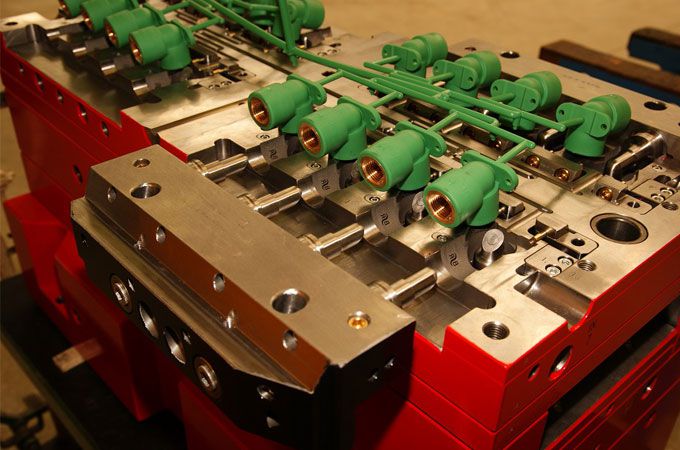
Inserts Loading Method for Insert Molding
When the injected molten plastic flows around the insert, once plastic solided, insert becomes a part of the finished piece. The encased metal is either placed by hand or machine depending on order quantity. For low volume insert loading operations, an operator will tend a molding machine and load the inserts by hand. Depending on the level of complication of the part and order volumes, automatic insert loading could be the best option.
Manual Insert Application
Manual loading is simple and effective for low-volume applications. In manual insert loading operations, an operator loads the inserts into the mold during the molding process.
Manual loading gives you the option to have detailed part inspections, assembly, packaging, or kitting with little to no added cost. With higher volume projects, however, it may become too costly or inefficient to load inserts manually.
Manual operators are able to check part quality and insert placement, while maintaining quality control.
Manual loading gives you the option to have detailed part inspections, assembly, packaging, or kitting with little to no added cost. With higher volume projects, however, it may become too costly or inefficient to load inserts manually.
Manual operators are able to check part quality and insert placement, while maintaining quality control.
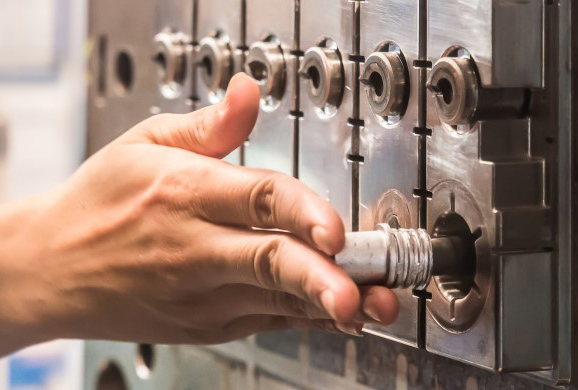
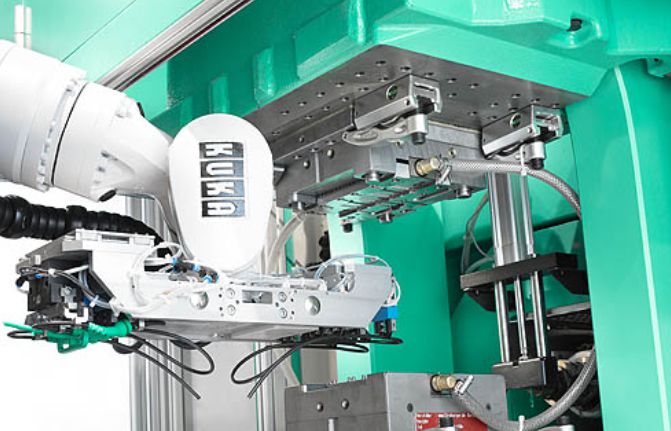
Automatic Insert Application
Automation production can be used to lower the price, higher quality Consistency of the part. It have multip benefits.
1. Since there is no longer a full-time operator at the machine, the injection operational costs will be reduced. These lower operational costs can then be passed onto the customer.
2. Since robotics automation systems can load inserts into the mold faster than an operator, you can produce more parts per hour leading to lower piece price.
3. Robotic automatic loading of inserts is not error-prone, potentially eliminating the cost of adjust mold and increasing the quality of parts, Integrated vision systems can be used to maintain consistent quality standards, which is also one of our core competencies
4. Automatic systems can also handle quality control. In automatic loading system, magnetic sensors check to ensure that the inserts have been properly molded into the part.Insuring the mold isn' t damaged.
1. Since there is no longer a full-time operator at the machine, the injection operational costs will be reduced. These lower operational costs can then be passed onto the customer.
2. Since robotics automation systems can load inserts into the mold faster than an operator, you can produce more parts per hour leading to lower piece price.
3. Robotic automatic loading of inserts is not error-prone, potentially eliminating the cost of adjust mold and increasing the quality of parts, Integrated vision systems can be used to maintain consistent quality standards, which is also one of our core competencies
4. Automatic systems can also handle quality control. In automatic loading system, magnetic sensors check to ensure that the inserts have been properly molded into the part.Insuring the mold isn' t damaged.
The Benefits of Insert Injection Molding
Insert molding is an efficient and convenient process that can be used in place of expensive methods such as soldering, welding, or attempting to use different forms of connectors or adhesives.
Through the use of metal insert molding, can improve components stability by combining the strength of metal with the design flexibility of plastic.
Through the use of metal insert molding, can improve components stability by combining the strength of metal with the design flexibility of plastic.
- Reduced Assembly and Labor Costs
- Increased part consistency
- Ease of assembly
- Increased component reliability
- Increased design flexibility
- Save Manufacturing Time
- Reduces Size and Weight
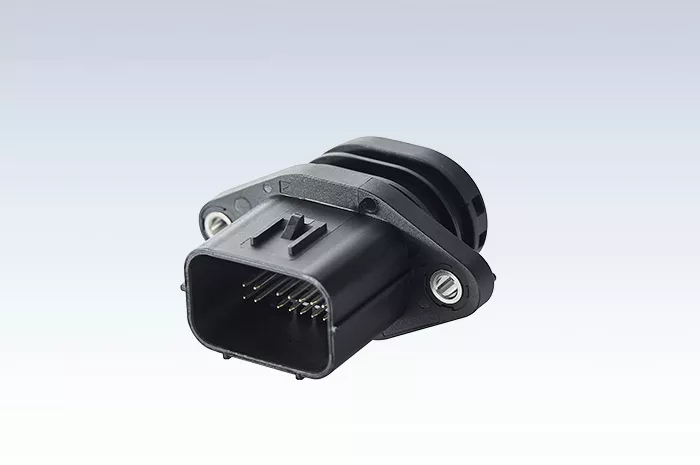
Applications for Insert Molding
Insert molding is used in a broad range of industries for a variety of uses and applications. Our engineers are equipped to design the best solutions for insert molding projects and our facilities have the capacity to manufacture insert-molding projects not otherwise available in the contract manufacturing marketplace. we primarily focuses on insert injection molding for the following sectors: Automotive, Medical, Industrial, Dental, Consumer, and Electronics Electrical.
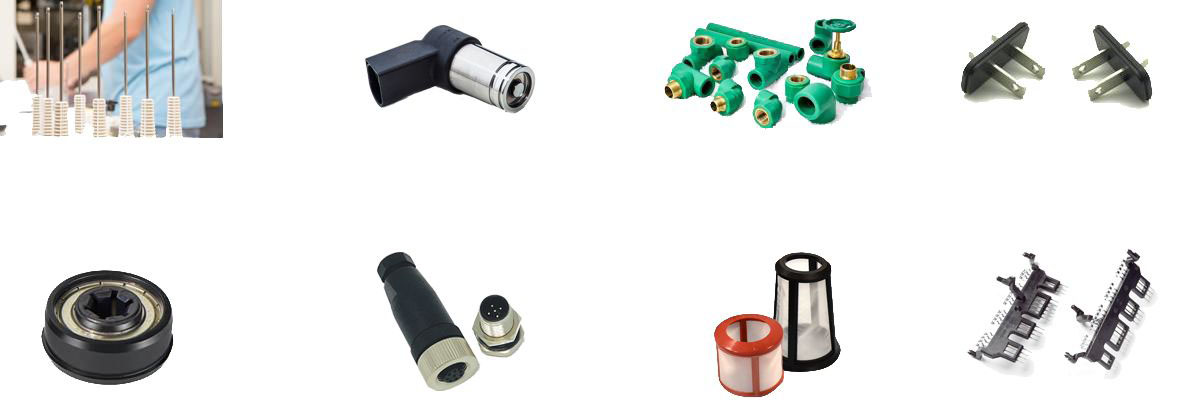
Turnkey Insert Injection Molding Solution
At Attractive Plastic, the entire custom injection molding process is a rigorous journey from design to production readiness. How you design a mold, build it and validate it determines the foundational strength of the entire injection molding manufacturing process.
Attractive Plastic is here to help you navigate the maze of properly designed and built injection molding products, from design to usability on the factory floor. We offer maximum flexibility because we draw on our strong mold and injection manufacturing capability. With a wide range of capabilities within our talent pool, we match each job to the right skill set for each mold design and injection, whether simple or complex. There is a great deal more to making a quality molds than simply getting the 3D geometry right for the core and cavity in blocks of steel. Defining the optimum parting line, specifying the design and components that will provide the best possible life with minimum maintenance and more are all part of attractive plastic.
Attractive Plastic is here to help you navigate the maze of properly designed and built injection molding products, from design to usability on the factory floor. We offer maximum flexibility because we draw on our strong mold and injection manufacturing capability. With a wide range of capabilities within our talent pool, we match each job to the right skill set for each mold design and injection, whether simple or complex. There is a great deal more to making a quality molds than simply getting the 3D geometry right for the core and cavity in blocks of steel. Defining the optimum parting line, specifying the design and components that will provide the best possible life with minimum maintenance and more are all part of attractive plastic.
